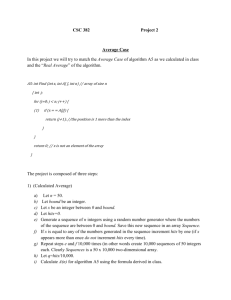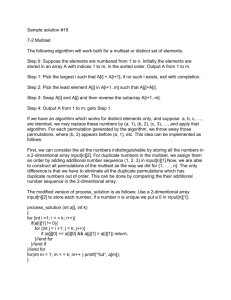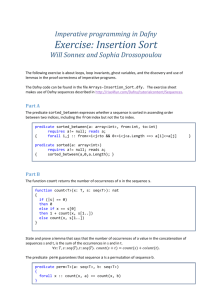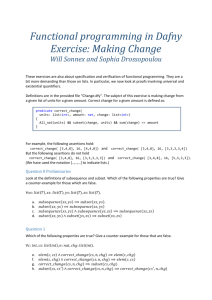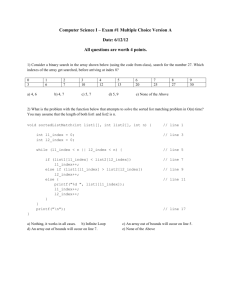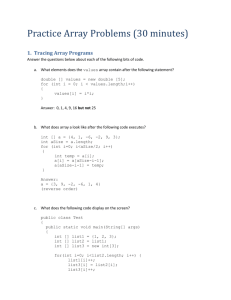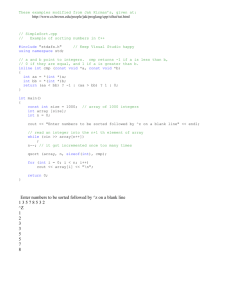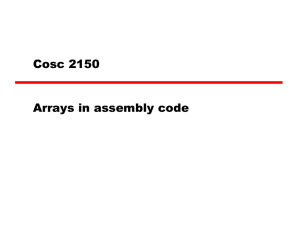Exercises_Max_And_Product
advertisement
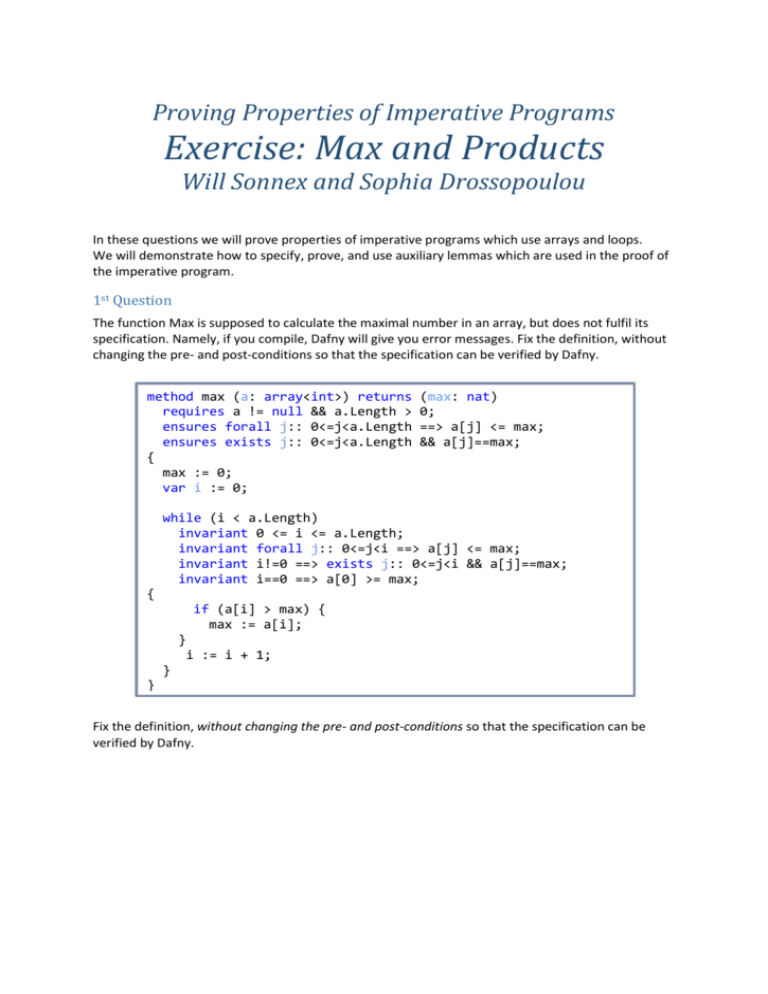
Proving Properties of Imperative Programs
Exercise: Max and Products
Will Sonnex and Sophia Drossopoulou
In these questions we will prove properties of imperative programs which use arrays and loops.
We will demonstrate how to specify, prove, and use auxiliary lemmas which are used in the proof of
the imperative program.
1st Question
The function Max is supposed to calculate the maximal number in an array, but does not fulfil its
specification. Namely, if you compile, Dafny will give you error messages. Fix the definition, without
changing the pre- and post-conditions so that the specification can be verified by Dafny.
method max (a: array<int>) returns
requires a != null && a.Length >
ensures forall j:: 0<=j<a.Length
ensures exists j:: 0<=j<a.Length
{
max := 0;
var i := 0;
(max: nat)
0;
==> a[j] <= max;
&& a[j]==max;
while (i < a.Length)
invariant 0 <= i <= a.Length;
invariant forall j:: 0<=j<i ==> a[j] <= max;
invariant i!=0 ==> exists j:: 0<=j<i && a[j]==max;
invariant i==0 ==> a[0] >= max;
{
if (a[i] > max) {
max := a[i];
}
i := i + 1;
}
}
Fix the definition, without changing the pre- and post-conditions so that the specification can be
verified by Dafny.
2nd Question
The following function product(a) returns the product of all numbers in array a.
function product(a: array<int>): int
requires a!=null;
reads a;
{
productAux(a,0,a.Length-1)
}
It is defined in terms of the auxiliary function productAux(a,from,to), which returns the
product of all numbers in array a between (and including) from and to. It calculates the product
starting from the rightmost index of the interval [from..to].
function productAux(a: array<int>, from:nat, to:int): int
requires a!=null && to < a.Length;
reads a;
decreases to-from;
{
if ( from > to )
then 1
else if ( from==to )
then a[to]
else productAux(a,from,to-1) * a[to]
}
The same mathematical function may be defined in terms of the alternative auxiliary function
productAuxAlt(a,from,to), which also returns the product of all numbers in array a between
(and including) from and to, but calculates the product starting from the left-most index of the
interval [from..to].
function productAuxAlt(a: array<int>, from:nat, to:int): int
requires a!=null && to < a.Length;
reads a;
decreases to-from;
{
if ( from > to )
then 1
else if ( from==to )
then a[to]
else a[from] * productAuxAlt(a,from+1,to)
}
2a. Question
State and prove a Lemma in Dafny, which ascertains that productAux(a,from,to) returns the
same result as productAuxAlt(a,from,to).
2b. Question
Consider the definition of the method Product, which calculates the product of all numbers in an
array a, by traversing the array left-to-right.
method Product(a: array<int>)
requires a != null;
ensures p == product(a);
{
var i := 0;
p := 1;
returns (p: int)
while (i < a.Length)
invariant ????;
{
p := p * a[i];
i := i + 1;
}
}
Prove that the code of Product satisfies its specification.
3rd Question
Consider now an alternative definition, which calculates the product of all number in an array a, by
traversing the array right-to-left.
method ProductAlt(a: array<int>) returns (p: int)
requires a != null;
ensures p == product(a);
{
var i := a.Length-1;
p := 1;
while (i >=
invariant
{
p := p
i := i }
0)
????
* a[i];
1;
}
Prove that the method above satisfies its specification.
Sample Answers
Sample answers can be found in the file Max_Product.dfy.


